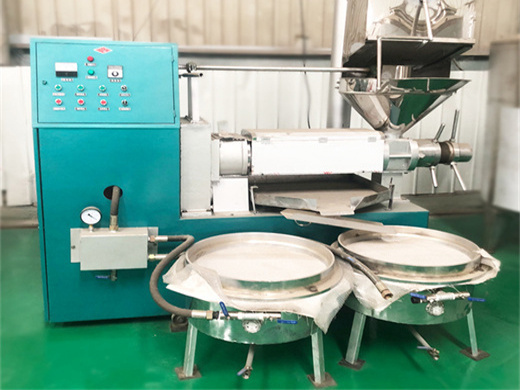Is Castor Oil Comedogenic? - COG
Hydrogenated castor oil, also known as castor wax, is non-comedogenic, meaning it's unlikely to clog your pores. While the hydrogenation process turns the oil into a wax, it doesn't elevate its comedogenic rating. So, similar to regular castor oil, you can use it without worrying about triggering acne breakouts. 2.
Castor oil, hydrogenated Kolliwax HCO is practically insoluble in water, slightly soluble in methylene chloride, very slightly soluble in anhydrous ethanol and practically insoluble in petroleum. Differential scanning calorimetry (DSC) Test conditions: Figure 2: Typical DSC curve of Kolliwax HCO Flowability data
Hydrogenated castor oil – All things to know about this
One of the most popular advantages of hydrogenated castor oil is for hair. The oil exhibits remarkable results for the growth of hair, eyebrows, and eyelashes. Moreover, it is capable of treating a large number of diseases. It is, however, not uncommon to see it in automobile and aviator mechanics. It can either be applied by massage or used in
Abstract A catalytic transfer hydrogenation of castor oil using glycerol-based is a process of adding hydrogen to the castor oil to produce hydrogenated castor oil with the addition of 10% Pd/C as the catalyst and glycerol as a hydrogen donor. The reaction occurred at the reaction temperature of 178 °C for an hour. To prove whether glycerol can be one of the hydrogen donors like limonene that
SAFETY DATA SHEET - Spectrum Chemical
Hydrogenated Castor Oil 8001-78-3PresentACTIV E Present KE-20143 PresentPresent (8)-297,(8)-35 8 PresentPresentPresent 232-292-2 Product code: H2779 Product name: HYDROGENATED CASTOR OIL, NF 8 / 10 U.S. Regulations
EU GHS Hazard Labeling Codes: GHS Hazard Codes. Impurity: 1,4-DIOXANE. Known to cause cancer. some. California OEHHA (Office of Environmental Health Hazard Assessment): Proposition 65 List (2020 Update) Impurity: 1,4-DIOXANE. Reasonably Anticipated To Be Human Carcinogen.
Safety Evaluation of Polyethylene Glycol (PEG) Compounds for
Overall, much of the data available in this review are on PEGylated oils (PEG-40 and PEG-60 hydrogenated castor oils), which were recommended as safe for use in cosmetics up to 100% concentration. Currently, PEG-20 glyceryl triisostearate and PEGylated oils are considered safe for cosmetic use according to the results of relevant studies.
Castor oil is increasingly becoming an important bio-based raw material for industrial applications. The oil is non-edible and can be extracted from castor seeds from the castor plant belonging to the family Euphorbiaceae. The oil is a mixture of saturated and unsaturated fatty acid esters linked to a glycerol. The presence of hydroxyl group, a double bond, carboxylic group and a long chain
Castor Oil - StatPearls - NCBI Bookshelf
Castor oil is a vegetable oil made from Ricinus communis, a plant common in the Eastern areas of the world. Castor oil is most well known for its laxative property; however, numerous communities report several other uses. For example, castor oil has been reported beneficial in uterine contraction, lipid metabolism, and antimicrobial activity, yet, the FDA has approved only its use as a
Hydrogenated castor oil. A fine, almost white to pale yellow powder, practically insoluble in water, m.p. 83–88°C. It contains principally 12-hydroxystearic acid. Polyoxyl castor oil. A clear yellow viscous liquid or semi-solid, freely soluble in water. Prepared by the reaction of castor oil with ethylene oxide.

Hydrogenated Castor Oil – Prospector by UL
North America. Hydrogenated Castor Oil is a hard, brittle vegetable wax produced from the hydrogenation of castor oil. It can provide an occlusive barrier and reduces transepidermal water loss, and hydrates the skin. It is used as an emollient and thickening agent in lip balms, anhydrous systems, deodorants, and color cosmetics.
The oil is not only a naturally-occurring resource, it is inexpensive and environmentally friendly. Castor oil is a viscous, pale yellow non-volatile and non-drying oil with a bland taste and is sometimes used as a purgative. It has a slight characteristic odour while the crude oil tastes slightly acrid with a nauseating after-taste.

Castor Oil: Uses and Benefits – WebMD
Castor Oil Packs. Some people use castor oil packs as remedies for constipation, dry skin, arthritis, or period cramps. These are pieces of fabric, usually cotton or wool, soaked in castor oil
Croduret 40. PEG-40 hydrogenated castor oil, Crouret 40 is a vegetable-derived nonionic surfactant which finds widespread use as an emollient, oil-in water emulsifier, lubricant and effective solubiliser. It can act as a wetting agent in styling waxes and imparts superfatting benefits in detergent systems. Croduret 40 is suitable for use in

PEG-40 hydrogenated Castor Oil: Does It Benefit The Skin?
Sodium Lactate. the good: As an emollient, PEG-40 hydrogenated castor oil can help reduce the appearance of dry flaky skin. It is also used to improve the texture and sensory feel of formulations. the not so good: here are some concerns about the ethoxylation process that is used to manufacture this ingredient.
Castor oil and Glyceryl Ricinoleate absorb ultraviolet (UV) light, with a maximum absorbance at 270 nm. Castor oil and Hydrogenated Castor Oil reportedly were used in 769 and 202 cosmetic products, respectively, in 2002; fewer uses were reported for the other ingredients in this group.

Hydrogenated oil: What is it? Is it bad? Learn more here
Side effects of hydrogenated oil. Hydrogenated oil, particularly partially hydrogenated oil, has a number of potential side effects that can negatively affect a person’s health. According to the
As previously reported, nearly 20% of PEG-40 hydrogenated castor oil was used to emulsify the glyceryl monooleate (GMO) as an oil to the aqueous phase. Thermodynamically stable and spontaneous

Chemical modifications of castor oil: A review – Ntsako
The hydrogenated castor oil and its derivatives are used for plasticizers of nitrile rubbers because of optimum tensile strength, elongation at break, and the resistance of rubber to swelling due to other oils (e.g. motor oil) that it can interact with. In lubricant, paint, cosmetic, and miscellaneous industries, hydrogenated castor oil is used. 39



